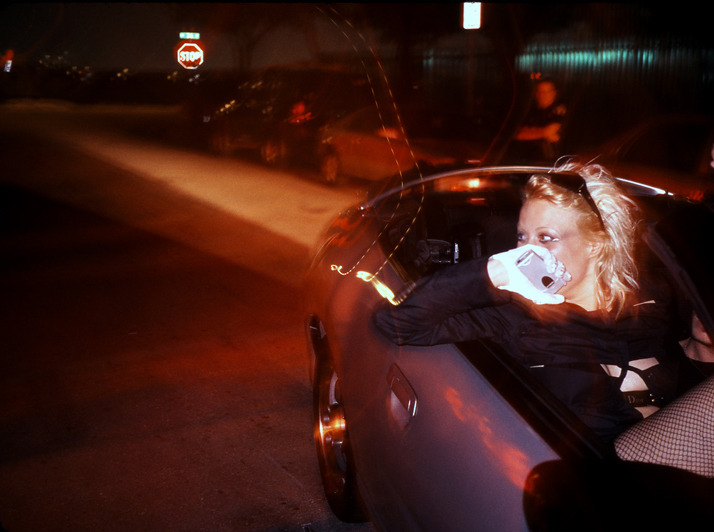For 25 years, an undercover British journalist sensationalized the front pages of tabloid magazines with reports that exposed the dirty secrets and habits of royals, celebrities, and athletes. Known as the “Fake Sheikh” or the “King of the Sting,” his face and true name remained a mystery to the millions of readers who enjoyed (or feared) his stories. In 2014, a very public trial exposed not only the identity of the journalist but blew the door open over questions of ethics, lies, and if the measures used by this journalist qualified as journalism or manipulation.
Mazher Mahmood was, by many accounts, a powerful, respected and awarded journalist. He spent the majority of his career as a reporter at the “News of the World.” Later he worked for the “Sunday Times” and the “Sun on Sunday.” In 1999 and 2011, Mahmood won “Reporter of the Year” at the British Press Awards, a ceremony that celebrates the best in Britihsh Journalism.
Mahmood’s stories destroyed careers and sent prominent people to jail. The “Fake Sheikh” obtained video and photographic evidence of famous people in compromising situations. In 1997, Mahmood caught TV star John Alford in the act of supplying the reporter with cocaine. Alford was sentenced to nine months in jail. In 2010, the reporter caught the Duchess of York in an undercover sting that she later claimed caused embarrassment as well as substantial financial loss. Mahmood took credit for stopping the plot to kidnap Victoria Beckham. In 2011 he earned the “Scoop of the Year” for an investigation that uncovered spot-fixing by Pakistani cricketers. His work was celebrated as a “force for good who exposed serious international crimes.” So how did he do it?
Mahmood’s technique was built on subterfuge. Mahmood posed as an Arab Sheikh and used his appearance of wealth and power to gain access and set up meetings with high-profile targets. In his only ever TV interview, recorded in 2008, a hidden Mahmood spoke with “The Andrew Marr Show” reporter Emily Maitlis. Mahmood said investigative journalism was slowly being strangled but there was real value in his work. “Our job as investigative journalists is to make sure the public gets to know the truth.”
Truth? Yes, the public does indeed deserve the truth. Mahmood received praise throughout his career for the number of stories he published that lead to convictions. Some of his subjects were guilty of low-level crime while others involved pedophiles and drug dealers. But rumblings over his tactics always trailed close behind. High-profile victims, time and again, claimed entrapment.
Maitlis asked flatly if Mahmood “goes on fishing expeditions, looking for trouble” and suggested that several incidents only occurred because he created them. At first Mahmood agreed that entrapment is a very valid point. But followed up with, “Nothing annoys me more than that. No I mean you’re a top TV presenter. Is there any way I could persuade you to supply me with cocaine? I could not.” Mahmood’s argument only held up for so long.
The summer of 2014 changed everything when Mahmood was taken to court and a judge called him a liar. The case involved English singer and “The X-Factor UK” judge Tulisa Contostavios, who was charged with supplying cocaine.
In a meeting set up by Mahmood, Tulisa was introduced to a Bollywood producer (the “Fake Sheikh”) who offered her a movie role as a bad girl opposite Leonardo DiCaprio. The meeting was recorded. Tulisa is seen laughing and enthused at the idea. But in an interview with BBC current-affairs program “Panorama,” she revealed that she felt pressure from Mahmood to get drugs. Nevertheless, Tulisa did make contact with a friend who then supplied drugs to Mahmood.
Tulisa had two things work in her defense in the case. First, Tulisa claimed she never intended her friend to supply the drugs. Second, a conversation Tulisa had in the back seat of the car after the meeting. Tulisa recalled an anti-drug discussion she had with her friend and claimed that Mahmood’s driver, Alan Smith, heard it. Initially Smith confirmed Tulisa’s account. But it was after Smith had a conversation with Mahmood, that his story changed. Suddenly Smith claimed he couldn’t remember if Tulisa’s conversation had happened.
The case disintegrated when Judge Gerald Gordon found that Mahmood, along with Smith, had tampered with evidence and lied to the court. The case against Tulisa was thrown out and Mahmood was sentenced to 15 months in prison. Just like that, an entire career was over. Ironically, it was Mahmood, not the subject of his story, who suffered the ultimate consequence.
Where is the ethical line drawn when determining the integrity of journalism and the methods used to obtain a story? In an article titled “The Ethics of Undercover Journalism” by the Columbia Journalism Review, author Greg Marx explained the risks to the purity of journalism when undercover reporting is used. “Overrealiance on sting operations and subterfuge can weaken the public’s trust in the media and compromise journalists’ claim to be truth-tellers.”
If the spirit of the job itself is to tell the truth, but lies are used in order to gain that truth, can the journalist be trusted? At the very least, can it be expected that the public place equal weight on not only the information revealed but the way in which that information was accessed?
Marx continued, “While the use of deception in reporting can yield sensational results, it also lends the subject a weapon to wield against the journalist. The ready-made complaint: If the reporter has forfeited the high ground of transparency and honesty, how can his conclusions be trusted by the public?”
The idea that a journalist can lie and cheat their way to a good story destroys the story itself. The public will, over time if not immediately, lose trust in the journalist as well as journalism in general. In Mahmood’s case, the crime goes further. He not only used deception to gain proximity to his subjects, he set them up. And therein lies the problem for the entirety of Mahmood’s career. He justified his undercover persona as an authority seeking the truth when in reality he entrapped his subjects in order to tell the story he wanted.
As Judge Gordon put it, “The motive was to preserve and enhance your reputation. You wanted another scalp and Miss Contostaavlo’s conviction would have achieved that. And to achieve that, when you saw a problem, you were prepared for the court to be deceived.”
A stellar journalist need not rely on deception to tell a story of truth.

